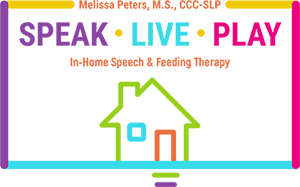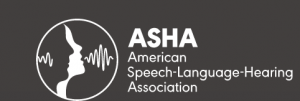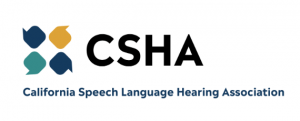As a speech-language pathologist specializing in feeding, I too often see parents using sippy cups for their kid’s milk, juice, and water intake. One aspect of feeding therapy is developing proper oral motor skills for functional chewing and swallowing.
The sippy cup is great from a parent’s perspective- it reduces spills and leaks, causing less time for parents to be cleaning up after their child! From a speech therapy and oral motor therapy perspective, it’s time to say “bye-bye” to the sippy cup. Don’t worry! There’s another great (non-leaking!) type of cup that I suggest parents use-the straw cup.
First, let’s discuss WHY I don’t recommend sippy cups:
- Sippy cups foster infantile tongue placement: Sippy cups cause your child’s tongue to be placed forward. As babies grow, their sucking pattern actually changes into a more adult-like pattern. A sippy cup promotes infantile tongue placement, instead of helping your child mature to an adult-like tongue position for drinking.
- Infantile tongue placement (may) make it more difficult for your child to say certain sounds: Because sippy cups promote forward tongue placement, some children who use sippy cups may have difficulty producing certain sounds. The sounds sometimes affected by sippy cup use are s,z,ch,t,d,l.
- Infantile tongue position (may) make it difficult for you to understand your child: If children don’t develop a more neutral tongue position, their general speech clarity may be affected. Some children who use a sippy cup for too long may not be able to coordinate their tongue for conversational speech, therefore making it difficult for parents and peers to understand them.
Now, let’s discuss why I DO recommend straw cups:
- Straw cups are a great workout for our facial muscles in the oral cavity: Straw cups help children develop the proper cheek, lip, and tongue muscles necessary for chewing and swallowing different textures of foods. The strong and coordinated cheek, lip, and tongue muscles are also necessary for children to develop clear speech! In my practice, feeding therapy often addresses strengthening these muscles.
- Straw cups can help your child eat more solid foods: Straw cups help children develop a more advanced tongue position and motor pattern, which is needed for children to eat from a spoon and chew and swallow different textures.
- Straw cups promote a variety of sounds: The rounding of lips needed to successfully drink from a straw promotes different sounds in the English language. The “oo, sh, ch, w” sounds all require lip rounding The straw cup offers great practice for lip rounding for a variety of different speech sounds and much more so than the sippy cup.
References:
Carruth BR, Ziegler PJ, Gordon A, et al. Developmental milestones and self-feeding behaviors in infants and toddlers. J Am Diet Assoc. 2004 Jan;104(1 Suppl 1):s51–56
Morris, S.E., & Klein, M.S. (2000). Pre-feeding skills: a comprehensive resource for mealtime development. Austin, Tx: Pro-Ed.





